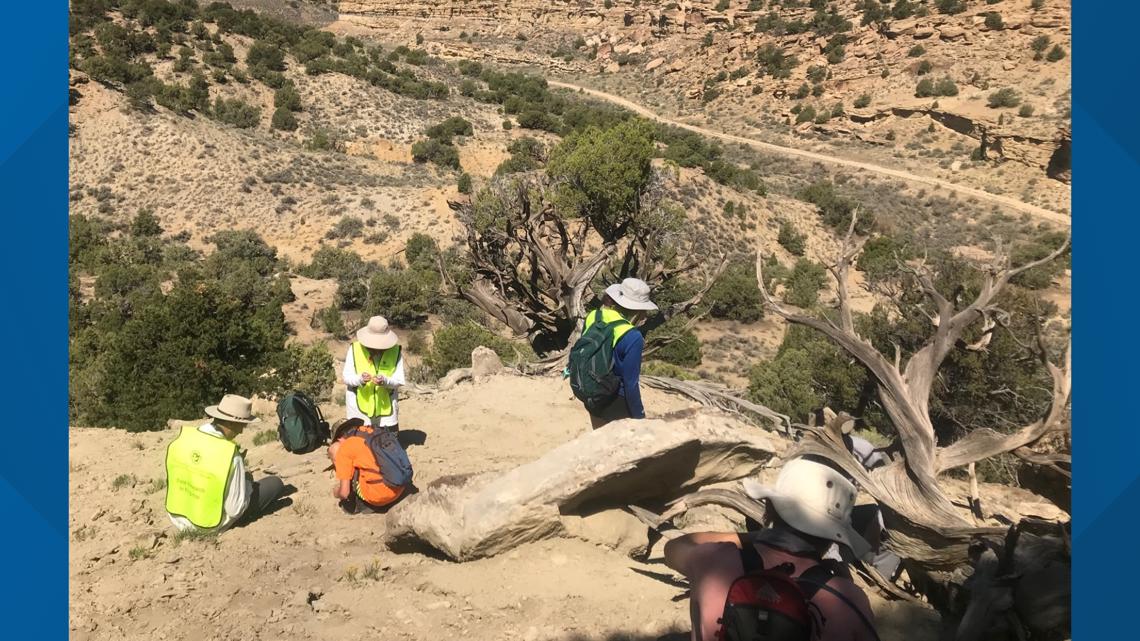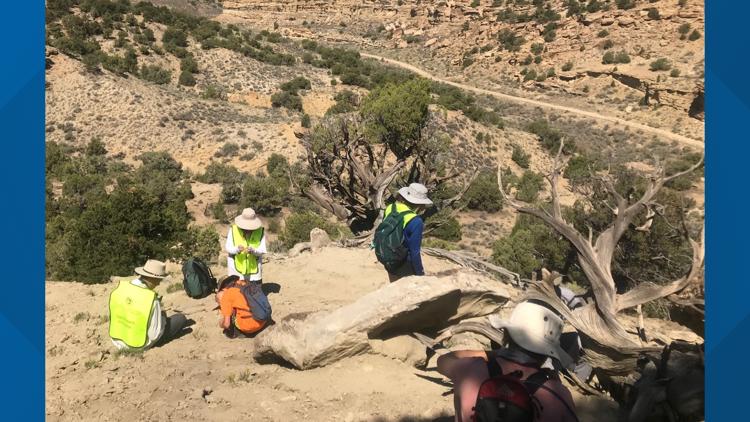RANGELY, Colo. — University of Colorado Boulder announced Wednesday that a team of paleontologists working in the northwest corner of Colorado have discovered a "swamp dweller" that was alive during the age of the dinosaurs.
The researchers, led by CU Boulder's Jaelyn Eberle, published their findings on PLOS ONE, the media release says.
The team unearthed a previously unknown mammal fossil near Rangely that is named Heleocola piceanus. "Heleocola" roughly translates to "swamp dweller." They were able to identify it from a piece of jawbone and three molar teeth.
The new mammal may have weighed around two pounds. It was around the size of a muskrat that may have scurried about the swamps with the dinosaurs, making it larger than most mammals from the Late Cretaceous period.
It lived in Colorado around 70 to 75 million years ago when an inland sea covered large portions of the American West. Eberle said the new animal is a cousin to modern-day marsupials and most likely ate plants with a few insects or other small animals thrown in the mix.
Other creatures in the area were turtles, duck-billed dinosaurs and giant crocodiles that could have flourished in and around marshes and estuaries. They ate wetland vegetation, fish and more, the media release says.
“Colorado is a great place to find fossils, but mammals from this time period tend to be pretty rare,” said Eberle, curator of fossil vertebrates at the CU Museum of Natural History and professor in the Department of Geological Sciences. “So it’s really neat to see this slice of time preserved in Colorado.”


The discovery helps to paint a better picture of a past Colorado that would be unrecognizable to residents today.
Paleontologists John Foster and ReBecca Hunt-Foster, co-authors of the new study, have been coming to this part of Colorado to dig up fossils every summer for about 15 years.
“The region might have looked kind of like Louisiana,” said Hunt-Foster, a paleontologist at Dinosaur National Monument in Utah and western Colorado. “We see a lot of animals that were living in the water quite happily like sharks, rays and guitarfish.”
The fossil was collected from the site in 2016 where Foster remembers seeing the bit of mammal jaw emerge from the sandstone. The fossil measured about an inch long.
“I said, ‘Holy cow, that’s huge,'” said Foster, a scientist at the Utah Field House of Natural History State Park Museum in Vernal, Utah.


